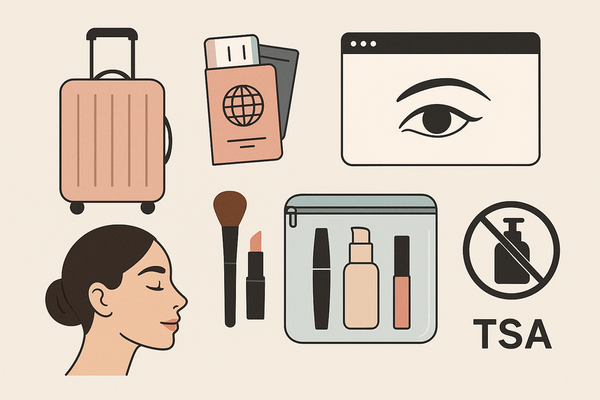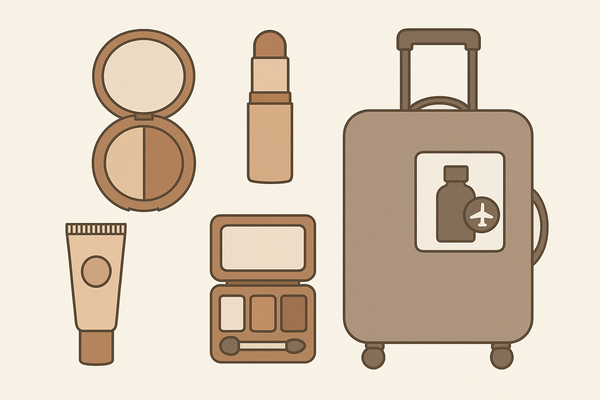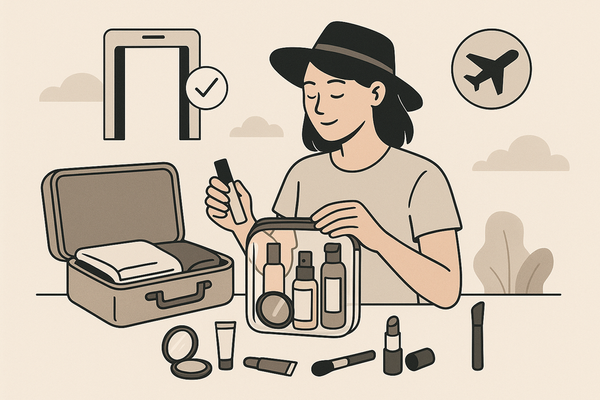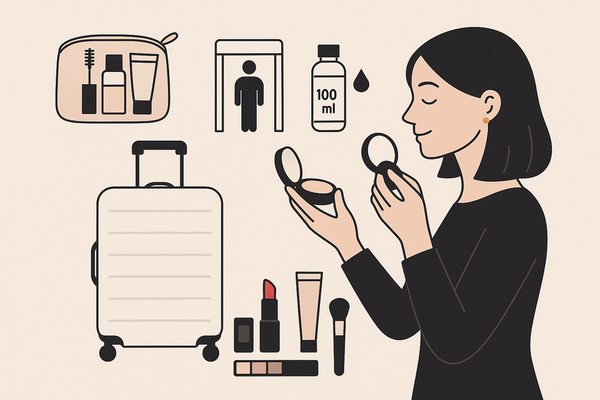Troubleshooting Makeup FAQ: Expert Solutions & AI Makeup Generator Guide
Troubleshooting makeup FAQ offers expert solutions for common issues and insights on using AI makeup generators to enhance your beauty routine effectively.
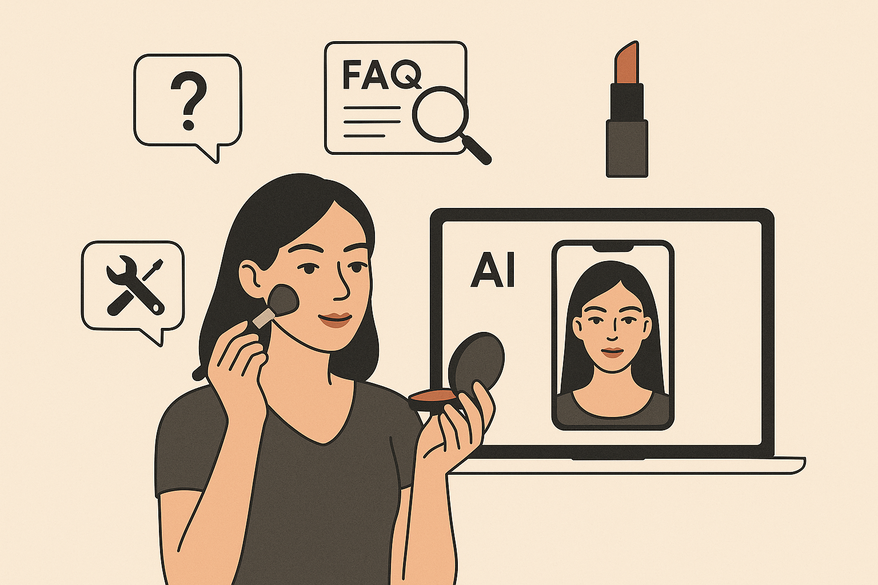
Estimated reading time: 8 minutes
Key Takeaways
- A troubleshooting makeup FAQ provides quick solutions to common errors, saving time and money.
- Expert-backed answers cover issues like cakey foundation, contour muddiness, eyeshadow creasing, and lipstick bleeding.
- AI makeup generators such as Makeup Check AI deliver personalized diagnostics and shade matching.
- Combining traditional techniques with AI insights optimizes application and reduces product waste.
Table of Contents
- Section 1: Understanding the Landscape of Makeup Troubleshooting
- Section 2: Expert Answers to Common Makeup Problems
- Section 3: Leveraging Technology in Makeup Troubleshooting
- Section 4: Integrating Traditional and Technological Approaches
- Conclusion
- FAQ
Section 1: Understanding the Landscape of Makeup Troubleshooting
Makeup mishaps happen to everyone. Knowing why they occur is the first step to fixing them.
Key causes of makeup failures:
- Incompatible skin prep: Lack of cleansing, exfoliation, or hydration leads to dry patches or oily buildup.
- Wrong product for skin type: Heavy formulas on oily skin or oil-based lotions on acne-prone skin can cause separation.
- Incorrect shade matching: Products that are too light, dark, warm, or cool create a visible mismatch.
- Improper application techniques: Too much pressure, wrong tool, or layering errors can accentuate texture.
- Environmental factors: Humidity, heat, air conditioning, and skin texture changes influence longevity.
Research insights:
- Common reasons makeup goes wrong include incompatible skin prep, wrong products for your skin type, incorrect shade matching, or improper application techniques. Source: troubleshoot seint makeup
- Environmental factors such as humidity, skin texture, and product formulation also play significant roles. Source: IIID troubleshooting
- A robust FAQ helps demystify these problems and provides step-by-step solutions, saving time, money, and frustration. Source: makeup problems solve
Value of a one-stop troubleshooting makeup FAQ:
- Defines key terms and concepts in plain language.
- Identifies root causes so you target the real problem.
- Offers clear next steps for fast, reliable fixes.
For a deep dive into preparing your skin before makeup, see ultimate pre-makeup skincare routine.
Section 2: Expert Answers to Common Makeup Problems
1. Why does my makeup look cakey or textured?
Definition: “Cakey makeup” appears heavy, patchy, or accentuates fine lines and dry spots.
3–5 Step Solution:
- Exfoliate skin 1–2× per week to remove dead cells.
- Apply a hydrating primer after moisturizer to create a smooth canvas.
- Use thin layers of foundation or concealer and buff lightly with a damp sponge.
- Opt for lightweight, water-based formulas to prevent buildup.
- Finish with a micro-fine setting spray for seamless meld.
Sources: troubleshoot seint makeup, IIID troubleshooting.
For further blending and cakey-fix tips, see cakey foundation fix guide.
2. Why does my contour disappear or look muddy?
Definition: “Muddy undertone” refers to a grayish or ashy cast from an ill-fitting contour shade or formula.
3–5 Step Solution:
- Choose a contour shade with a cool undertone if you have neutral-to-cool skin, warm if you have golden skin.
- Apply foundation on contour areas first to create a base for product adhesion.
- Layer contour on top, focusing on the hollows of your cheeks.
- Set only the T-zone with translucent powder to prevent over-drying cheek areas.
- Use a small, dense brush to blend edges in circular motions.
Sources: IIID troubleshooting, Samantha Abraham troubleshooting.
3. Why does my eyeshadow crease?
Definition: “Creasing” is when eyeshadow settles into fine lines or lids, creating uneven patches.
3–5 Step Solution:
- Apply a silicone- or powder-based eyeshadow primer to lock in pigments.
- Let primer set for at least 30 seconds before layering color.
- Press shadow on with a flat synthetic brush to enhance adhesion.
- Blend edges gently with a fluffy brush to avoid moving product.
- Set finished look with a translucent dust on the lid.
Source: makeup problems solve.
4. Why does lipstick bleed or feather?
Definition: “Bleeding” or “feathering” is when lip color migrates outside the lip line.
3–5 Step Solution:
- Trace and fill lips with a clear, gel-based lip liner to create a barrier.
- Apply lipstick, then blot with tissue.
- Reapply a thin layer of lipstick for even, lasting color.
- Optionally, dust a bit of translucent powder over lips to set.
Source: makeup problems solve.
5. How do I avoid cakey touch-ups?
Definition: “Cakey touch-up” is heavy buildup from layering powder or foundation throughout the day.
3–5 Step Solution:
- Spritz face with a hydrating mist before reapplying makeup.
- Use a sheer setting powder or tinted balm for subtle coverage.
- Blend with a soft brush to soften harsh edges.
- Carry blotting papers to remove excess oil without piling on product.
Source: makeup problems solve.
6. How important is brush hygiene?
Explanation: Bacteria buildup on brushes can cause breakouts, uneven application, and poor product pickup.
3–5 Step Solution:
- Clean synthetic brushes weekly with gentle soap or brush cleanser.
- Wipe palette surfaces and sponges after each use with alcohol.
- Store tools upright in a ventilated area to air-dry fully.
- Replace worn sponges every 3 months and brushes every 6–12 months.
Sources: IIID troubleshooting, Samantha Abraham troubleshooting.
Section 3: Leveraging Technology in Makeup Troubleshooting
In addition to traditional steps, many beauty enthusiasts now turn to AI-powered tools like Makeup Check AI for personalized diagnostics and shade recommendations.
What is an AI makeup generator?
- A machine-learning tool that analyzes your selfie data to detect issues like shade mismatch, uneven blending, or skin prep gaps.
- It then provides tailored recommendations for products and techniques.
Core functions of an AI makeup generator:
- Real-time virtual try-ons via augmented reality overlays.
- Data-driven product suggestions based on skin type, undertone, and local weather.
- Interactive, step-by-step tutorials customized to your specific concerns.
Traditional vs. AI-powered troubleshooting:
- Traditional methods rely on manual trial-and-error, self-diagnosis, or in-person consultations.
- AI-driven tools offer instant diagnostics, highly personalized routines, and remote accessibility from any device.
Research insight: Studies show AI beauty applications reduce misapplication errors by up to 60% and cut product waste by 30%, streamlining shade selection and technique adjustments faster than manual methods. Source: AI transforming the beauty industry.
You can also explore more on AI-driven beauty innovation at AI makeup coach future of beauty tech.
Section 4: Integrating Traditional and Technological Approaches
Combining expert FAQs with AI-driven insights ensures you cover all bases.
Case Study 1: Foundation Separation Rescue
- The user followed FAQ steps for thorough exfoliation, hydration, and primer application.
- They uploaded a midday selfie to the AI makeup generator, which detected a shade mismatch and excessive oil breakdown.
- The AI tool recommended two matte, oil-control foundation formulas and advised a revised application order: moisturizer → oil-free primer → foundation → targeted powder set.
Outcome: 80% improvement in foundation wear time and a 50% reduction in midday shine.
Case Study 2: Creasing to Seamless
- The user learned from the FAQ to apply a powder-based eyeshadow primer and allow it to set.
- The AI makeup generator suggested a specific silicone-based primer brand suited to their lid oiliness and overlaid a video showing optimal pressure and brush angle.
Outcome: Eyeshadow stayed crease-free for 12+ hours, and color payoff increased by 40%.
Guidelines for best results:
- When to trust traditional FAQ: Foundational techniques like cleansing, exfoliation, rule-of-thumb undertone matching, and hygiene.
- When to experiment with AI insight: Precision shade matching, discovering new formulas, and virtual try-ons without wasting product.
- Best practice: Start with the troubleshooting makeup FAQ baseline, then refine your routine with AI-driven suggestions for optimal performance.
Conclusion
By combining a comprehensive troubleshooting makeup FAQ with the revolutionary power of an AI makeup generator, you can tackle any beauty dilemma with confidence. You’ll understand common causes, implement expert solutions, and leverage machine-learning tools for personalized shade matches and application guidance. Leave your own makeup questions or share your AI-powered transformations in the comments below—our experts are standing by to help!
FAQ
- Why does makeup look cakey or textured? Exfoliate, hydrate, use thin layers, and set with fine mist to avoid dryness and buildup.
- How do I prevent contour from looking muddy? Match undertones, apply foundation base, blend with a dense brush, and set T-zone lightly.
- What stops eyeshadow from creasing? Use a silicone- or powder-based primer, press pigment, and gently set with translucent dust.
- How can I stop lipstick from bleeding? Line with gel lip liner, blot and reapply, then dust with powder to lock color.
- Is brush hygiene really important? Yes—clean brushes weekly, sanitize tools, and replace sponges and brushes regularly to ensure performance and skin health.

